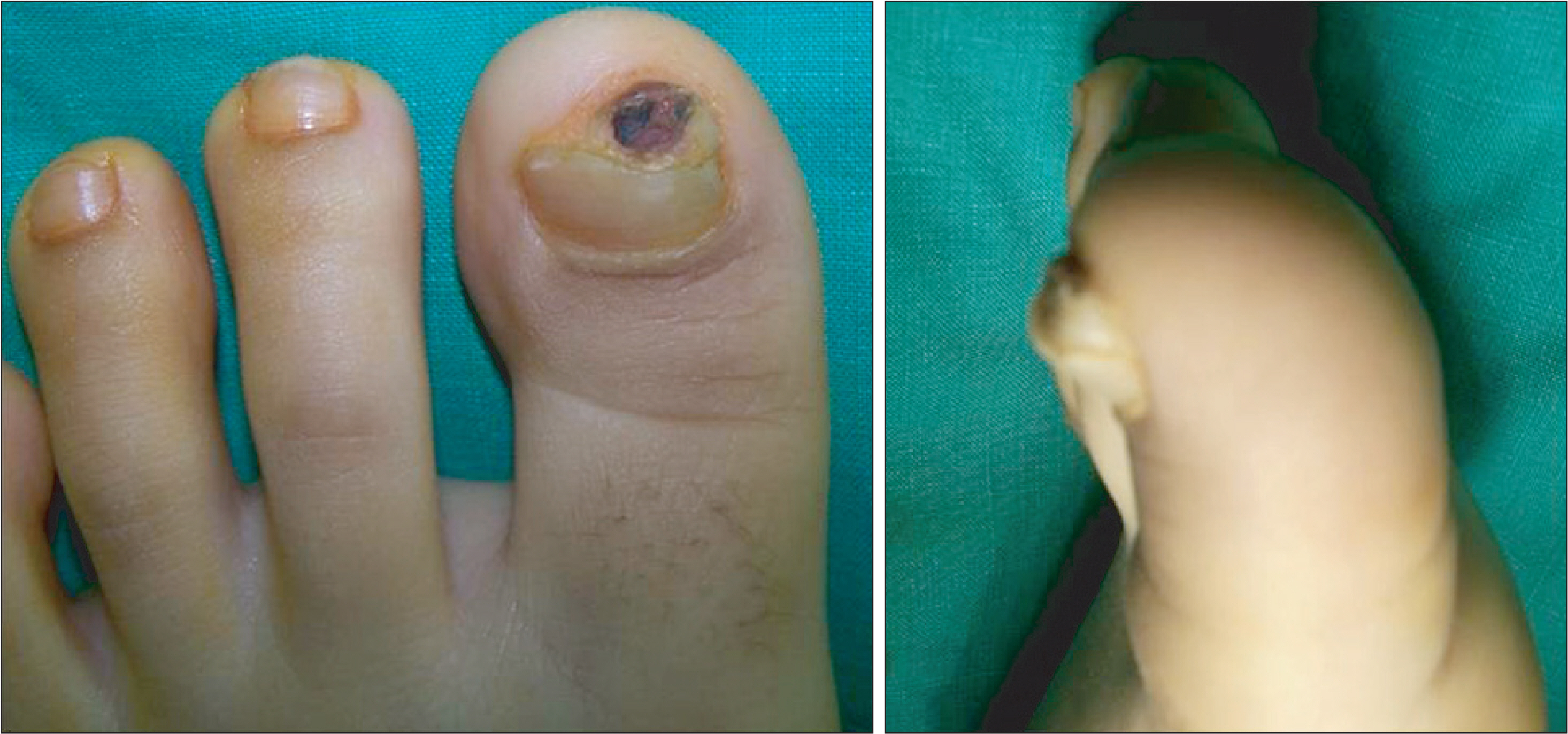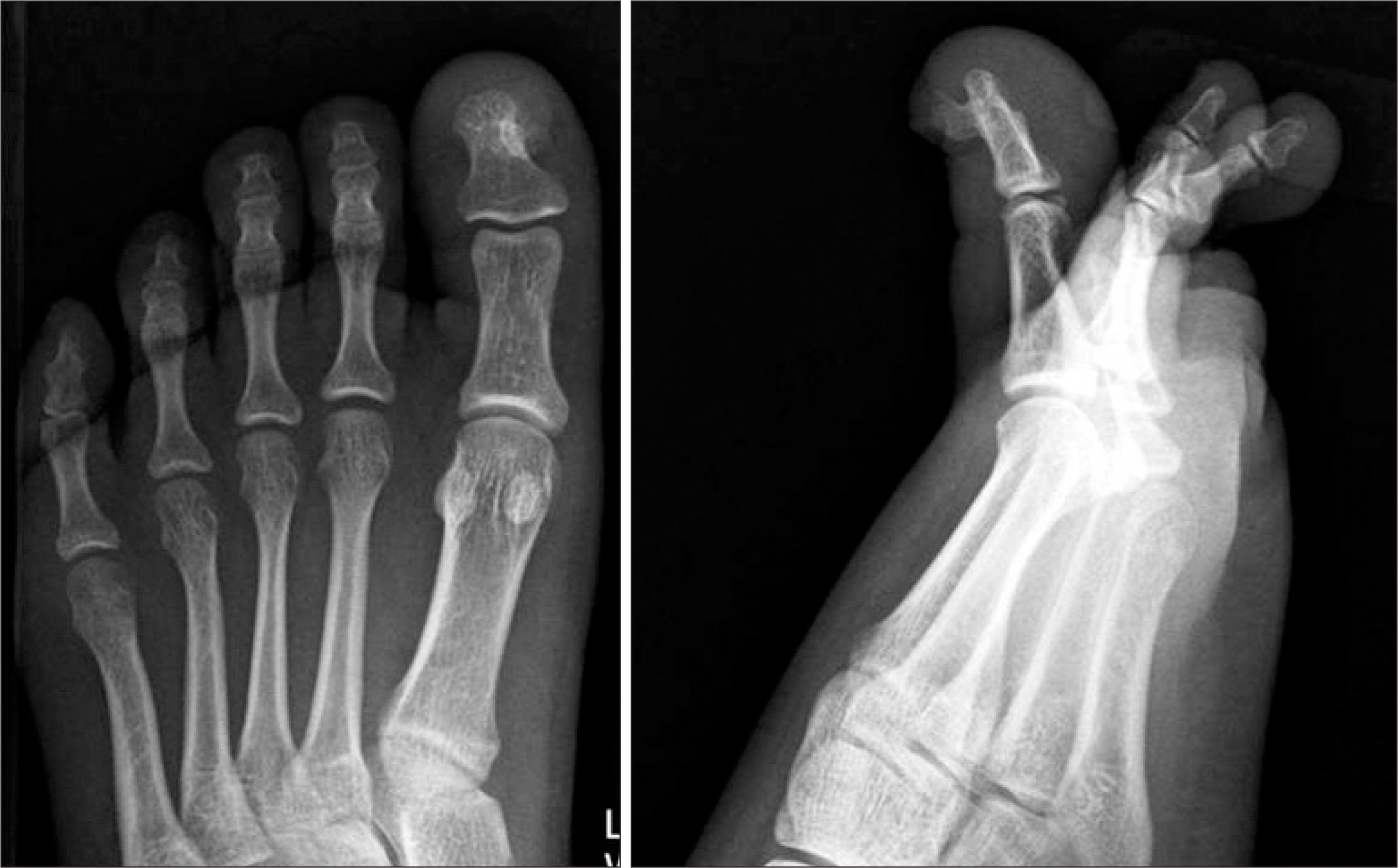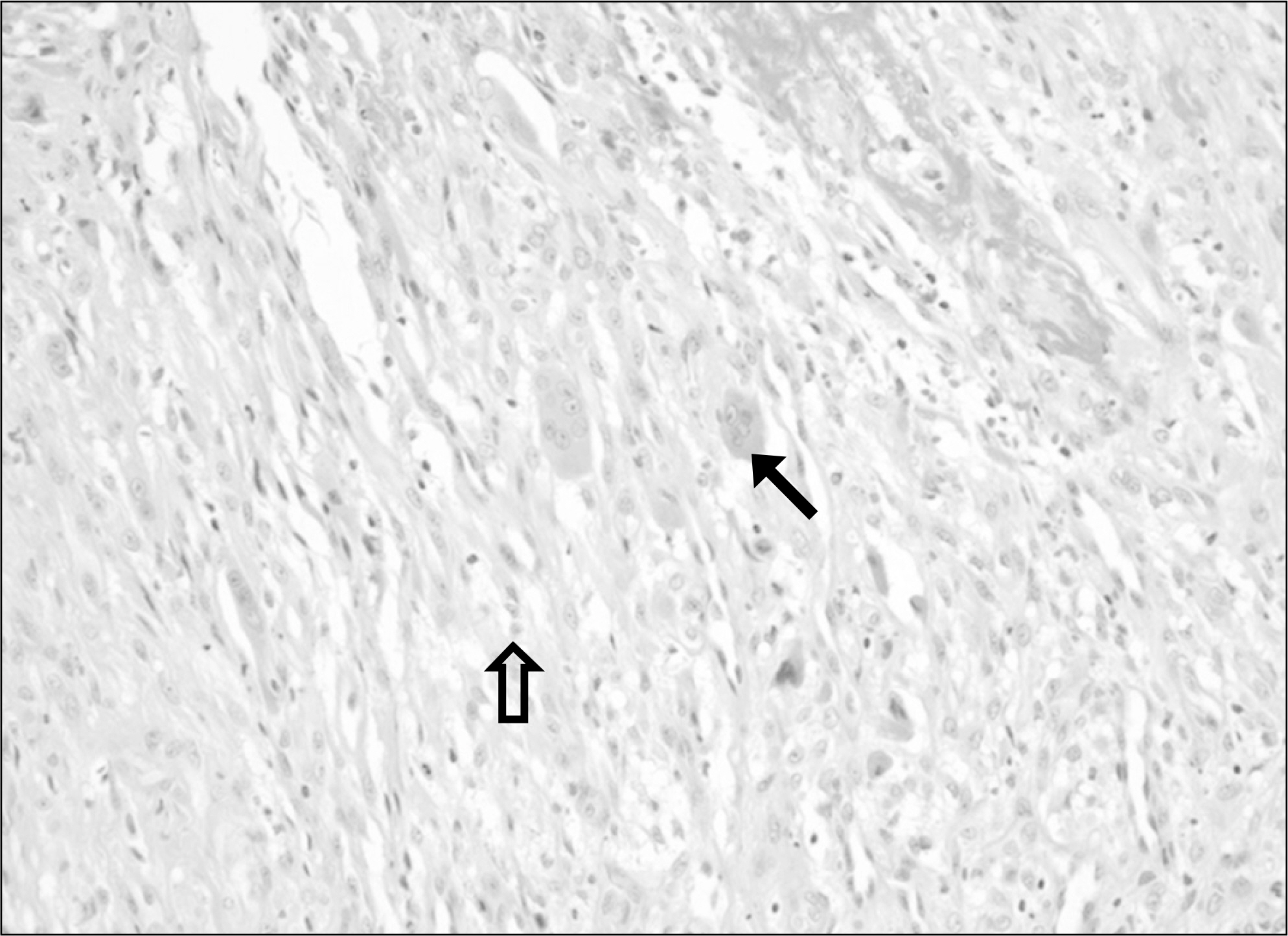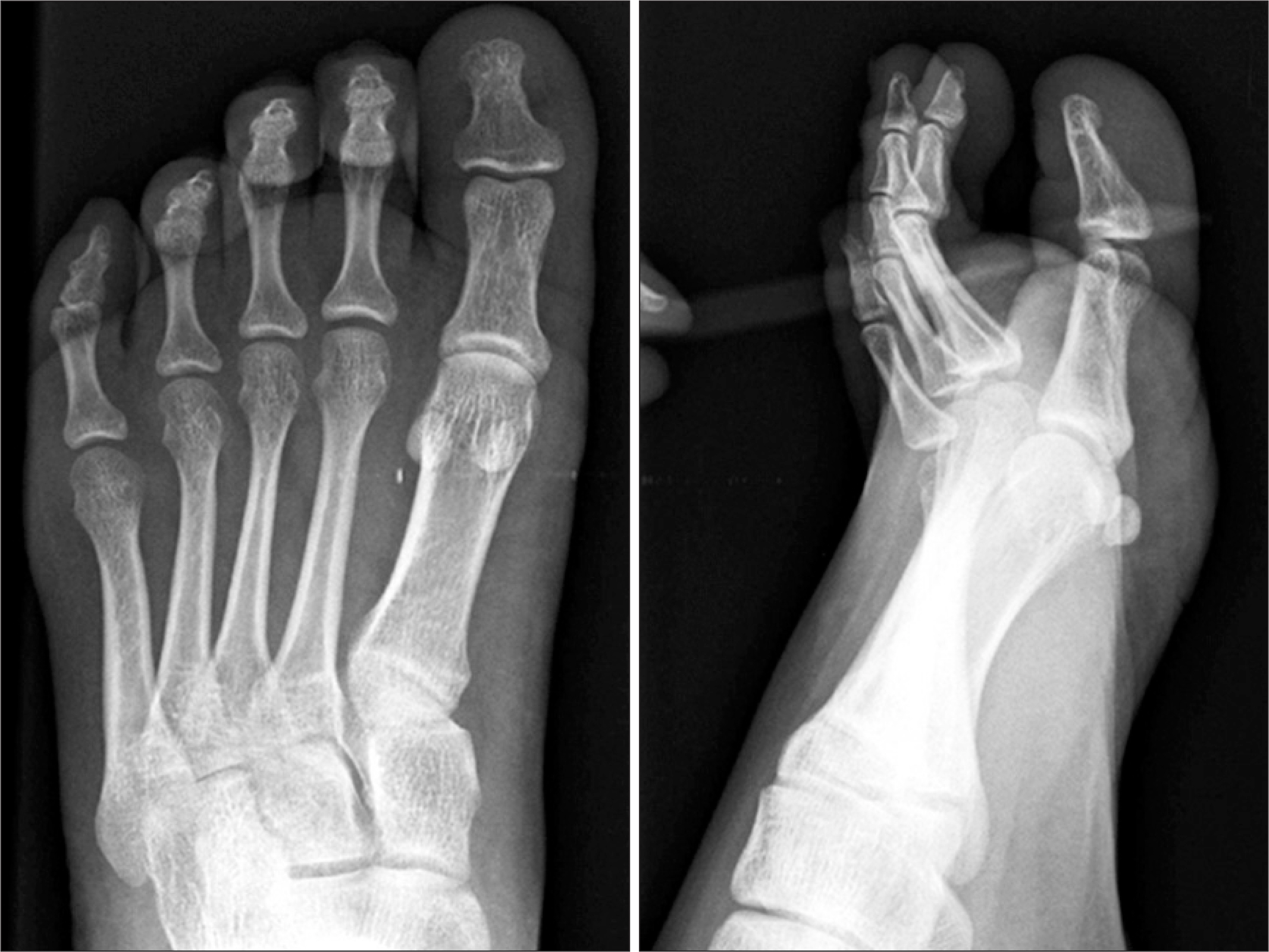J Korean Bone Joint Tumor Soc.
2010 Dec;16(2):91-94. 10.5292/jkbjts.2010.16.2.91.
Fibro-osseous Pseudotumor of the Great Toe: A Case Report
- Affiliations
-
- 1Department of Orthopaedic Surgery, Bundang Jesaeng General Hospital, Daejin Medical Center, Sungnam, Korea. cjc@dmc.or.kr
- 2Department of Pathology, Bundang Jesaeng General Hospital, Daejin Medical Center, Sungnam, Korea.
- KMID: 1456324
- DOI: http://doi.org/10.5292/jkbjts.2010.16.2.91
Abstract
- Fibro-osseous pseudotumor is an extremely rare benign lesion which is fast-growing and painful. It is often misdiagnosed as a malignancy, but it is a noninvasive entity and can be cured by simple resection. We report a case of fibro-osseous pseudotumor of the distal phalanx of great toe in 20-year-old female patient who present with painful mass.
Keyword
MeSH Terms
Figure
Reference
-
1. Dupree WB, Enzinger FM. Fibro-ossoeous pseudotumor of the digitis. Cancer. 1986; 58:2103–9.2. Moosavi CA, Al-Nahar LA, Murphey MD, Fanburg-Smith JC. Fibrosseous pseudotumor of the digit: a clinicopathologic study of 43 new cases. Annals of Diagnostic Pathology. 2008; 12:21–8.
Article3. Nishio J, Iwasaki H, Soejima O, Naito M, Kikuchi M. Rapidly growing fibroosseous pseudotumor of the digits mimicking extraskeletal osteosarcoma. J Orthop Sci. 2002; 7:410–3.
Article4. Schutte HE, van der Heul RO. Pseudomalignant non-neoplastic osseous soft tissue tumors of the hand and foot. Radiology. 1990; 176:149–53.5. Porter AR, Tristan TA, Rudy FR, Eshbach TB. Florid reactive periostitis of the phalanges. AJR Am J Roentgenol. 1985; 144:617–8.
Article6. De Silva MVC, Reid R. Myositis ossificans and fibroosseous pseudotumor of digits. Int J Surg Pathol. 2003; 11:187–95.7. Kempson RL, Fletcher CD, Evans HL, Hendrickson MR, Sibley RK. Tumors of the soft tissue. Washington, DC: Armed forces Institute of Pathology;2001. p. 409–13.8. Kransdorf MJ. Benign soft-tissue tumors in a large referral population: distribution of diagnosis by age, sex and location. AJR Am J Roentgenol. 1995; 164:395–402.9. Park IS, Han JY, Han HS, Kim YB, Chu YC. Fibroosseous pseudotumor of the digits: a case report. Korean J Pathol. 1999; 33:540–3.10. Chaudhry IH, Kazakov DV, Michal T, Luzar B, Calonje E. Fibroosseous pseudotumor of the digit: a clinicopathologic study of 17 cases. J Cutan Pathol. 2010; 37:323–9.
- Full Text Links
- Actions
-
Cited
- CITED
-
- Close
- Share
- Similar articles
-
- A Case of Rapidly Growing Fibro-osseous Pseudotumor of the Toe after Trauma
- A Case of Recurrent Fibro-osseous Pseudotumor of the Digit
- A Case of Fibro-osseous Pseudotumor of the Digit
- Fibro-osseous Pseudotumor of the Digits: A case report
- Radiological Features of a Fibro-Osseous Pseudotumor in the Digit: A Case Report






